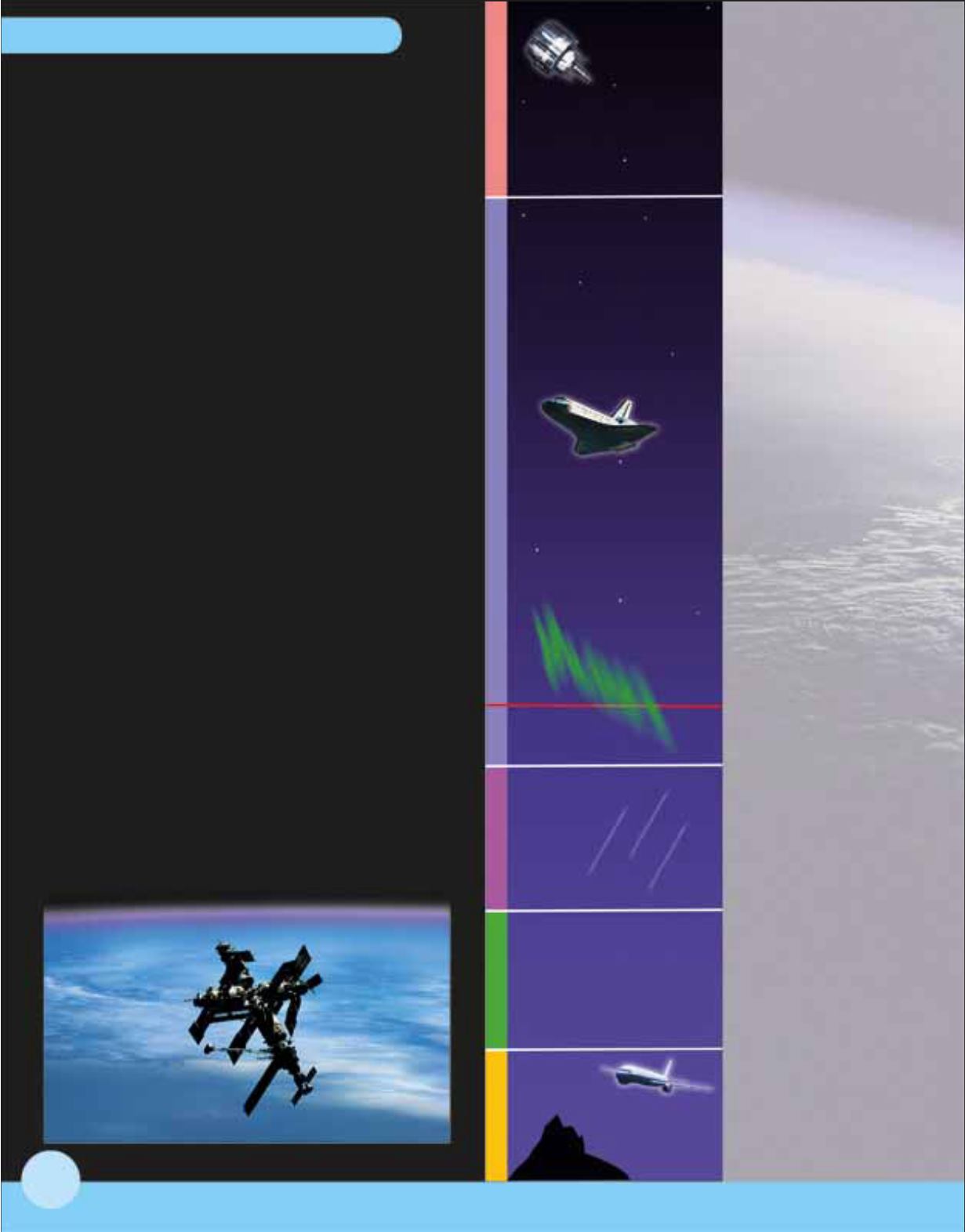
Earth is cloaked in a
thin layer of gases – the
atmosphere. Outside this
atmosphere is space,
where there is no air to
breathe, or to allow wings
to fly, and where nobody
can hear you scream.
270
The universe
Fading away
Our atmosphere does not
just end suddenly – it fades
gradually into space.
The
exosphere
is the outer
layer of the atmosphere,
extending about 10,000 km
(6,000 miles) above the ground.
From here, lighter gases drift
into space beyond.
The
thermosphere
reaches
way up to more than 700 km
(over 400 miles) above Earth.
The polar lights (
aurora
borealis
in the north and
aurora australis
in the south)
glow in the thermosphere.
In turn, the
mesosphere
extends about 85 km
(53 miles) above the ground.
The air is thin here, but it’s
still thick enough to slow
meteorites down.
The
troposphere
extends
between 6 and 20 km
(3½–12 miles) above the
ground. All our weather takes
place in the troposphere.
The
stratosphere
rises
about 50 km (31 miles)
above the Earth. Planes cruise
in the upper troposphere or
lower stratosphere, above
the clouds.
What do we call the mix of gases that makes up our atmosphere?
Where does
space begin?
View from
Mir
Photographed from the American shuttle
Atlantis
, the Russian
Mir
space station
once orbited above Earth’s atmosphere.
EXOSPHERE
THERMOSPHERE
MESOSPHERE
STRATOSPHERE
TROPOSPHERE
Most experts agree that
space begins at 100 km
(62 miles) above the ground.
Past this, our image is not
drawn to scale.


